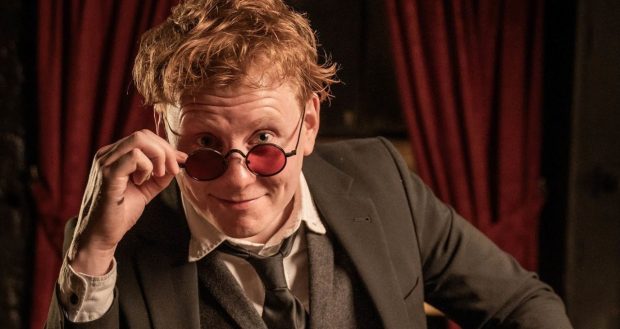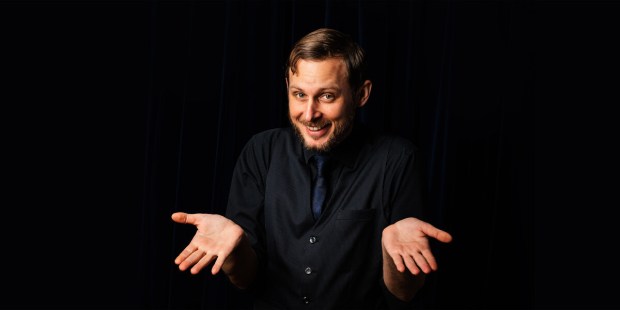☆☆☆☆
No good magician, nor performance artist of any type, backs away from a challenge. And to be part of an ensemble show when engaging in an artform that thrives on forging a unique identity is certainly that. Here at World Magic Review, we are wary of ensemble shows for exactly that reason, but the Champions of Magic prove that not only will they not back away from that challenge, but they will spend over a decade becoming quite possibly the best at it in the business.
The Champions’ show kicks off with an immediate burst of energy, with not a moment to lull an audience into it when there is so much trickery to accomplish in 90 minutes. This could go either way, and in the beginning the laughs are light, but the Champions’ effusive energy, particularly on the parts of magicians Richard Young and Sam Strange, ultimately wins them over.
This show has it all – cardistry, “close up” magic, grand illusions, mentalism, and escapology, and more. The four performers: the aforementioned Young and Strange, Liberty Larsen, and Fernando Velasco spread the disciplines between themselves, but still share so much stage time and assist in each other’s tricks so much that the entire show feels cohesive and well plotted. The Champions favor classic tricks that a magic fan is likely to be familiar with, but do an excellent job of constructing narratives around them in a way that make them feel unique. Not only that, but the Christmas theme is lightly, but cleverly, woven within the show.
The most and least compelling of the storylines are actually done by the same magician, Fernando Velasco. Velasco thrives with his variation on a Spirit Cabinet that connects the audience with the most famous Christmas ghost story. It is equal parts cheeky and earnest, and is delightful to see included in a non- Spiritualist centered magic show. He does misstep elsewhere, however, by missing an easy opportunity to localize a Houdini inspired escape when performing in Milwaukee, WI. Houdini grew up in nearby Appleton after his family moved to the US, and moved to Milwaukee for a portion of his young adulthood, which would undeniably make Milwaukeeans consider him a local boy and win any magician to call it out their favor. Coupled with fellow magician Larsen making nervous ‘windy city’ jokes when struggling to keep a card tower stable (and on a day the Packers lost to the Bears! Oh the controversy!), this unfortunately gave the impression that the simple work of making a few adjustments to connect to locals was not made a priority once tour cities were chosen.
Regardless, the Champions of Magic have created a fun holiday experience with this show, which easily delights the children of their audience and charms the adults too with their unfettered silliness and joy to be performing. Group magic shows are a difficult balance to maintain, and the Champions do it better than any other contemporary act.






